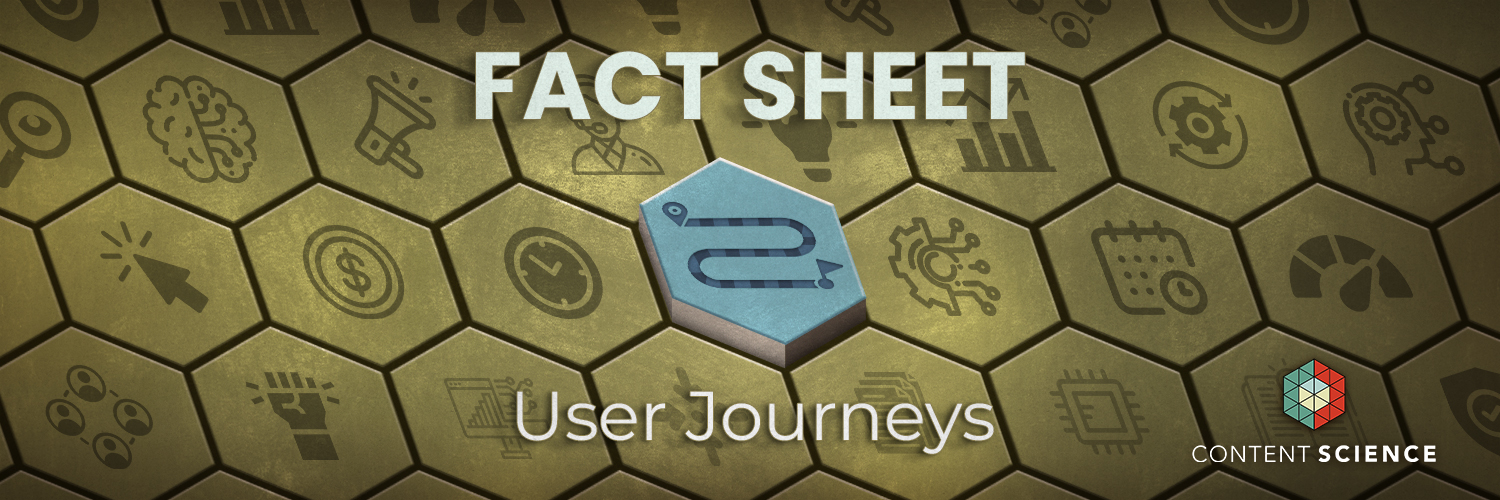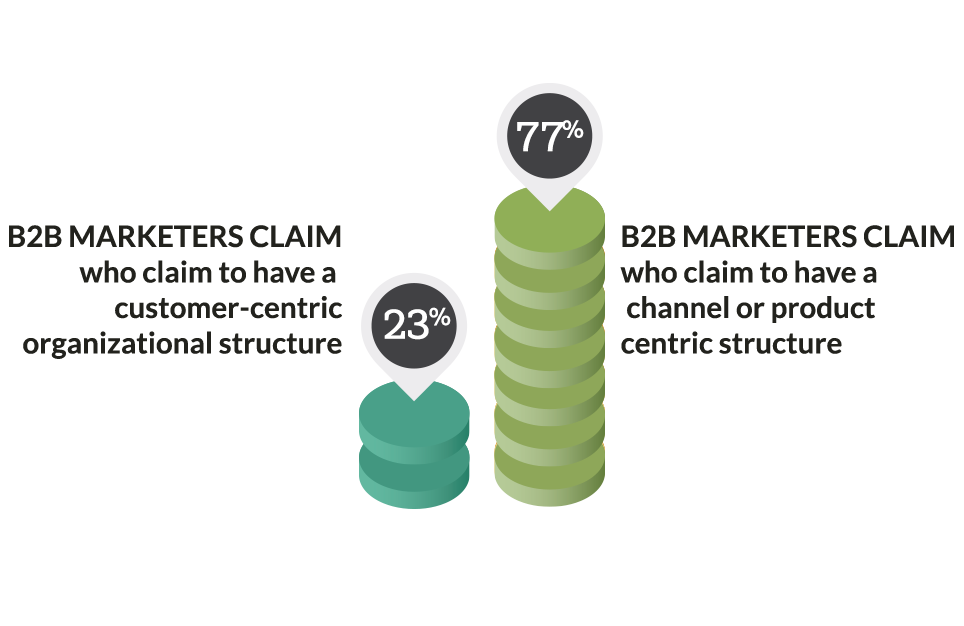
User journeys are a hot topic right now in content. MarTech cites user journeys as one of the key drivers of modern marketing, while MarketingProfs announces customer experiences are a make-or-break business factor. In truth, companies that want to thrive and survive must be audience-first this and every year because “customer journey mapping will become a mandatory tool for digital transformation. Enterprises will begin to do customer journey mapping as the first part of their planning activities,” predicts Mahesh Kolar, Director of Mobility Applications at Dell.
As content strategy and content marketing have exploded, the need to evolve beyond user personas and focus on user journeys has intensified. During much of the journeys your customers or users take, they are interacting with your content or content available about your organization.
In fact, “82% of consumers research products prior to going in the store,” according to Salesforce Research’s Connected Shoppers Report. For B2B decisions, that number jumps to 94%.
One of the goals for creating user journeys is to ensure that a user’s experience is better with your brand than all (or at least most) of the other brands they encounter on a daily basis. The sheer mass of content that people experience across varied touchpoints each day is staggering, with U.S. adults now spending nearly eight hours a day with digital media according to Statista.
Every minute, Americans use 18,264,840 megabytes of wireless data, and Buzzfeed users view 159,380 pieces of content.
So how can an organization stand out among all the noise? Colleen Jones, CEO of Content Science, points to four differentiators.
- Identify user questions and decisions, not just user tasks.
- Move beyond content analytics and focus on content intelligence.
- Capture specific user emotions throughout the highs and lows of the user journey.
- Focus on your omnichannel reality, which Hubspot defines as “a multichannel sales approach that provides the customers with an integrated shopping experience.”
“2022 is the year that brands must leverage their investments in 1st-party data and present truly personal offers to their loyal customers at scale. Those that transition to personalized offers and experiences will have a stronger competitive advantage and drive deeper value with their loyal customer base, while those that don’t make the transition will begin losing share.” — Forbes
Accenture Global reports that customers are increasingly frustrated with the level of service they experience: 91% because they have to contact a company multiple times for the same reason, 90% by being put on hold for a long time, and 89% by having to repeat their issue to multiple representatives.
Only 23% of B2B marketers claim to have a customer-centric organizational structure versus a channel or product-centric structure. — Forrester
63% of consumers expect businesses to know their unique needs and expectations, while 76% of B2B buyers expect the same thing. — Salesforce
And there is no shortage of opportunity to improve customer experience.
78% of customers have bailed on a transaction because of a poor service experience, and 91% of unhappy customers will never again willingly do business with the offending company. — Kimberly Abel-Lanier, VP Maritz Motivation Solutions and Terry Byrnes, Caesars Entertainment VP of Total Services
The benefits to improving your users’ journeys is evident. As SAS shares from their Forbes Insights study, Data Elevates the Customer Experience: “Leaders in using data-driven experience management highlighted benefits including faster time to decisions (67%), a more comprehensive common enterprise view of customers (51%), more confidence in their decisions by managers and employees (49%), and greater collaboration between departments (36%).”
Only 13% of companies feel strongly that they have identified their customers’ decision journeys and understand where to focus marketing, while nearly half cannot measure the critical states of the consumer decision journey. — McKinsey
Luckily, more and more executives are recognizing the importance that their organizations better understand user journeys. As Hubspot’s Chief Revenue Officer urges in a recent report from GetApp, “What companies need to do is start with their buyers’ perspective and their journey. View your product and company through the lens of the buyer. What opportunities are you trying to pursue? How are you prioritizing? What categories are you looking at to solve it? And, for your category, how are you uniquely positioned to solve it? When you understand those pieces and work them into the sales process you’re showing buyers that you appreciate their obstacles and concerns.”
90% of CXOs are forecasting revenue and earnings increases over the next two years. Nearly 80 percent of executives said the pandemic revealed their organizational strengths and the vast majority are using the pandemic to “reset” their businesses. — Forbes
According to Salesforce, 86% of senior-level marketers say that it’s absolutely critical or very important to create a cohesive customer journey. Those that focus on improving user journeys stand to be rewarded with a much higher ROI.
87% of all MQLs don’t convert. — Alex Papillaud, Intel Security
Why is such a high percentage of marketing-qualified leads not converting? Papillaud suggests companies need to use data in smarter ways so they focus their storytelling efforts on the right users. Plus, “mapping is very difficult given the heterogeneity of all markets, and the same consumer may have a totally different journey at different times because of different contexts,” offers Wharton professor Jerry Wind. Jones advises companies home in on their metadata to safeguard that their content will actually end up in the right user journeys.
When it comes to content, metadata doesn’t simply matter. It gives your content marketing almost magical powers. — Colleen Jones, Content Science Review
While the task of mapping user journeys can be daunting, more big and small data is available than ever. By constantly analyzing users’ journeys, organizations can better deliver relevant, welcomed content to the right audiences through the right touchpoints at the right moment. We’re in a perpetual era of personalization, and it’s imperative to strive for positive user journeys that end with the desired result — for both the user and the organization.











Comments
Comments are closed.
We invite you to share your perspective in a constructive way. To comment, please sign in or register. Our moderating team will review all comments and may edit them for clarity. Our team also may delete comments that are off-topic or disrespectful. All postings become the property of
Content Science Review.